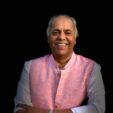CRICKET WILL BE A T20 AFFAIR

By: Yajurvindra Singh
Email: sunnybilkha@hotmail.com
July 22, 2022: Cricket as a sport was associated with the British and the colonies that they ruled. The sport was the center point of the way of life and the spirit of ethics and behavior. “It’s just not cricket,” was one such statement that arose when one’s behavior was not fair, honest, or morally correct.
The game may have very few countries battling for supremacy due to the high standards that were set over time but, it is one sport that is played even in the remotest parts of the world.
Wisden had published a wonderful book written by Charles Connelly called “Elk stopped Play”, which embodied the magic and appeal of the game of cricket. It gives one tale of ‘cricket around the world’, played on tiny, far-flung Pacific islands to the frozen wastes of Antarctica.
The interesting part of the book is how cricket has been adapted taking into account the environment and the conditions prevailing. In most Asian countries, cricket is played in the empty spaces between agricultural fields, and houses and in urban cities, on the road, or even in the alleys. In India, cricket has found its way into every nook and corner of the country.
The onset of television and the mobile phone has brought cricket to the masses and the skills that a cricketer display is now being readily imbibed and learned by young boys and girls.
The migration of people from the Asian cricket-playing countries as well as ones from Britain, Australia, New Zealand, Africa, and the Caribbean Islands into the USA, Canada, Europe, Middle East, and the Nordic belt has made cricket the fastest growing sporting activity.
In this melee, one wonders where the game of cricket is heading towards. In the United States, the people in the Information Technology (IT) world have made cricket into an enjoyable weekend affair. This is gradually changing as their kids are now getting into playing serious cricket and this, one feels, will augur well for the game in the future. This is the trend that one can see developing not only in the US but also in other non-playing cricket countries in the world.
The perceptive change in cricket amongst the top-playing countries is that cricket is going through a disruptive movement. The T20 format of the game has taken the sport into a different orbit. This has now become the nucleus and the hub of the game. Cricket, through this shorter version of the game, is capturing millions of fans and followers as it is fast and exciting.
The conventional form of the game, Test cricket, will be there as the pure form for cricket connoisseurs. However, cricketers will be playing it more aggressively and boldly. The present thick-wooded cricket bats, well-manicured outfield, and wickets have made batting much easier. The contest between the bat and the ball is so much in favor of the batter that scores of 300 are being easily chased in the fourth innings.
The recent Test victories of the English side and the recent chase by Pakistan against Sri Lanka are good examples of how a fielding side struggles to control a batting unit. The ease with which batters are being able to clear the boundary or the inner fielders is making it very difficult for a fielding side to attack. A top edge or even a hit with the bottom of the bat seems to sail into the crowds. The reaction time for the fielders to catch or stop the ball has increased substantially. The normal caught-and-bowled that bowlers could hold on to has now become irrelevant as rather than catching the ball, the bowler is now ducking for safety along with the umpire to avoid getting seriously injured.
Test cricket may live for another decade. However, the One-Day International (ODI), the 50-overs version seems to be the format that will gradually fade away in importance.
This takes one back to the early 70s when the limited-overs version of the game became a part of the international cricket itinerary. This was to get spectators back into the stadiums around the world. The paucity of time made a five-day game a luxury that one could not enjoy and, therefore, Test cricket was rapidly losing its fan following. The ODI was great for cricket as it brought the crowd back and the colorful clothing, encouraging quick runs, and a definite result at the end was the reviving factor for the game.
Change, as one says, is inevitable and so the ODI, one feels, will be substituted and overhauled by the T20 version.
Ben Stokes, the England Test captain and considered to be one of the best cricket all-rounders in the world at present, has become the first casualty in announcing his retirement from the ODIs. He said that playing all the formats is very difficult for a cricketer as it takes a massive toll on the body. This is a good indicator of things to come.
Ravi Shastri, the former India coach, and play have stated that franchise cricket should be encouraged. He has a point as in the cricketing world there is now an influx of T20 leagues in every cricket-playing nation of the world. The IPL in India and similar leagues have sprung up in the West Indies, South Africa, Australia, England, New Zealand, Sri Lanka, Pakistan, UAE, and now the United States as well. This shows the radical change in cricket that is gradually empowering the game.
Cricket has become a business and cricketers are the ingredients on which it runs.
There will be a T20 World Cup for countries to compete in. Cricketers around the world are not as handsomely paid and looked after as their counterparts in India. They will go where they can earn to make a living, and franchise cricket seems at present the North Star to follow.
It will be T20 all the way.
(Yajurvindra Singh is a former Test cricketer. Views expressed are personal.)

